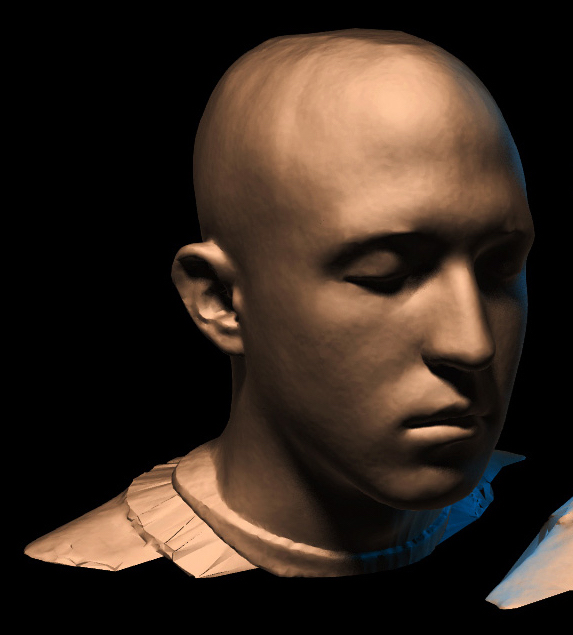In this series of posts, we’ll be featuring mathematical video and streaming channels from all over the internet, by speaking to the creators of the channel and asking them about what they do.
We spoke to Keenan Crane, a professor in Computer Science & Robotics at Carnegie Mellon University, who runs his own YouTube channel which has over 17,000 subscribers.

Channel title: Keenan Crane’s YouTube Channel
Link: youtube.com/keenancrane
Topics covered: applied geometry, topology, & PDEs; computer graphics
Average video length: 60 minutes
Recommended videos: The Laplace Operator; Curvature of Surfaces; Geodesics; Repulsive Shape Optimization; Intrinsic Geometry Processing; Monte Carlo Geometry Processing
Who are you, and what is your channel about?
The channel covers a variety of topics in applied mathematics (differential geometry, topology, PDEs, Monte Carlo, numerical methods, etc.), guided heavily by the research and teaching I do as a faculty member at Carnegie Mellon University (CMU). My work is focused on computer graphics, digital geometry processing, and adjacent fields (like robotics and computer vision), so there tends to be an eye toward applications and intuition, rather than a formal theorem/proof style.
I’m also an incredibly visual person, and have spent much of my career (and childhood!) creating illustrations and visual explanations. So, I try as much as possible to always ask, “how can I make this concept more tangible through visualization?” Sometimes the best you can do is a “cartoon” of the true object or idea—but well-chosen cartoons can be incredibly powerful! I’m also in a fairly unique position of being an expert in inventing and coding graphics algorithms (it’s my day job!). So, I can often come up with my own custom solutions to tough visualization problems, rather than relying on existing tools.
How did it start?
The channel started out as just my personal YouTube channel, used mostly to share research results (and course assignments before that!). From the beginning it struck me that academics put an enormous amount of effort into giving talks, lectures, etc., that only a small handful of people ever get to see. Once you’ve put in all that effort, why not take a moment to make a recording and share it with the rest of the world? Just felt like common sense. This was back around 2008 when many academics still weren’t on YouTube, Vimeo, TikTok, etc.; of course the world has changed a lot since then, and by now it’s become fairly standard practice.
As many did, I started using the channel much more during the pandemic, to share lecture videos with my students. Rather than slap together Zoom screen recordings, I used this moment as an opportunity to hone & refine the lectures I had been giving for the past 7+ years, including a lot of new illustrations, animations, etc., to help explain basic concepts in differential geometry and computer graphics. Since then I have continued to produce videos both for teaching and for research. But the positive feedback I received on the pandemic-era videos really opened my eyes a bit further: as William Thurston put it, “The world does not suffer from an oversupply of clarity and understanding (to put it mildly).” Many of the explanations I was using for my students at CMU really seem to help people struggling with conventional materials to finally “get it” at an intuitive level.
Who is the intended audience for the channel?
Ideally, anyone who I can get excited about geometry, mathematics, computer science, etc. One of my favorite quotes about teaching, from Plutarch, is that “The mind is not a vessel to be filled but a fire to be ignited.” So, I try as much as possible to provide an intuitive point for “everyone”—though I’m not sure I always succeed!
More realistically, a lot of the channel material should be accessible to folks with a decent background in high school and early college mathematics (calculus, Euclidean geometry, linear algebra, etc.). These are after all the kinds of students I teach at CMU! That tends to include students from mathematics and computer science, but historically also a fairly diverse crowd (engineering, philosophy, architecture, art & design, etc.). Some of the research-oriented material can require a (much) deeper background, but even there I _try_ to make things accessible. Something I tried recently, for instance, is to assign difficulty levels to different sections of a talk – I think it worked out ok!
What is a typical video like?
These days my videos are quite long—around an hour or more—since they originate from either 80-minute lectures given in class, or from seminar-length research talks. Probably I would do well to break these down into shorter chunks. The good news is that many of them are broken down into reasonably digestible chunks, thanks to YouTube’s automatic timestamps (which nicely match up with section titles in the videos). Although many of the videos are part of a larger course, I try to make each lecture reasonably self-contained. E.g., you can jump into a lecture on, say, the Laplacian, or spatial transformations, without needing to sit through the whole course.
Why should people watch your videos?
I would recommend the channel primarily to folks looking to build intuition around topics in (applied) mathematics, and who have an affinity for visual explanations. I know there’s a longstanding debate about the use of pictures in mathematical pedagogy (e.g., can a picture be a proof?), especially since a poorly-chosen picture can leave the wrong impression about what an object is / is not. Certainly I would encourage everyone to pursue rigorous definitions to complement the intuitive/visual material. But my sense is that there’s already a lot more of the former than the latter! So, I’m very glad if I can fill in some gaps.
What are some highlights of the channel so far?
A number of the videos, such as the ones listed above on the Laplacian, curvature, or geodesics, feel like they landed well: I had enough time for the subject to crystalize (i.e., years) that I felt I could really communicate the right perspective, and break down the details into a crisp hierarchy. Others (such as a few from the computer graphics course) were made at a mad pace several days before lecture, and could probably use a revision or two!
The research videos can also be a fun watch, since they show how all of this stuff ultimately gets applied. For me, a lot of the deeper understanding comes through research and implementation. For instance, the intrinsic perspective from Riemannian geometry is incredibly powerful—but traditionally very hard to get your hands on without going through a reasonably serious course on manifolds. But if you approach the intrinsic picture through mesh processing (highlighted in the “Intrinsic Geometry Processing” video), you can quickly get a feeling for what “intrinsic vs. extrinsic” means—without going through the exercise of defining an atlas of charts. In general this is a big theme in my group: translating ideas from continuous mathematics into discrete computational algorithms. This translation is helpful not only for doing useful stuff on a computer, but also for finding alternative explanations that often have a lower barrier to entry.
What exciting plans do you have for the future?
I am right now in the thick of co-developing a new course on “Monte Carlo Methods and Applications”, with my colleague Gautam Iyer (also at CMU). Since I’m used to thinking mostly about geometry and topology, which are inherently visual, working on Monte Carlo and associated topics (probability, measure theory, stochastic calculus, etc.) has been a fun new visualization challenge. For instance, why do we define a σ-algebra the way we do, and how do you make that motivation “obvious” from a visual point of view? Can’t say I’ll succeed, but I’ll certainly have fun trying! It will also probably be a year or two before things really start showing up in the channel: a good thing about trying out new material locally is that you can fall flat on your face without too many people watching.
The other big item on my agenda is a bit meta: making videos about making mathematical visualizations. Specifically, I’ve been working with a team at CMU over the past few years to create a tool called Penrose, aimed at helping non-experts make beautiful mathematical visualizations. Just like you can now generate beautiful mathematical documents (via LaTeX) without needing to be an expert typographer or typesetter, we want to make it easy for anyone to just type a mathematical formula and get a helpful illustration. One thing we still desperately need, though, are good tutorial videos! So, be on the lookout for those as well.
